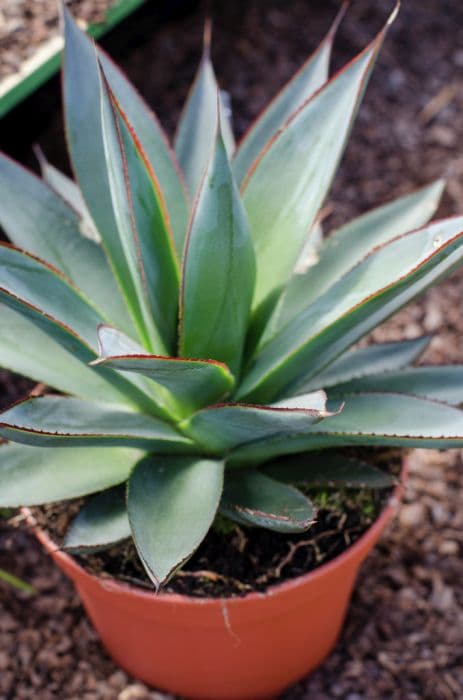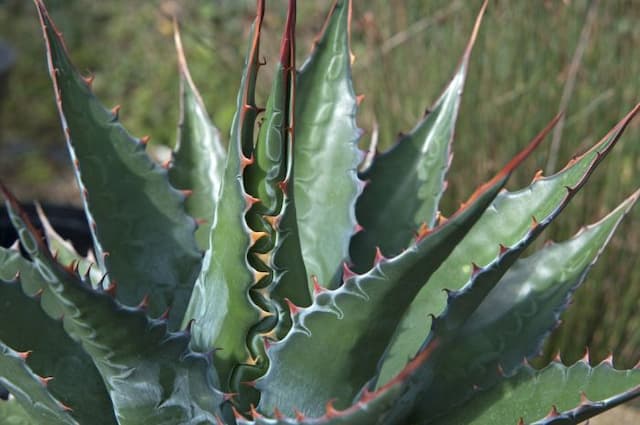Frizzle Sizzle Albuca spiralis

ABOUT
Albuca spiralis, commonly known as the Frizzle Sizzle, is an intriguing plant. It features a tightly clustered base of leaves that emerge from a bulbous base. These leaves are particularly distinctive for their corkscrew-like shape, curling and twisting in spirals which can resemble a coiled spring. They are usually a vibrant green, often with a light, silvery bloom on the surface that adds to their allure. The plant is also known for its flower spikes, which bear small, yellow-green flowers that are bell-shaped and can have a slight fragrance. The tips of the petals may exhibit a subtle brush of maroon or brown, adding to the contrast of the overall appearance. The curly leaves and the unique flowering spikes together make the Frizzle Sizzle a striking and ornamental addition to any plant collection.
About this plant
 Names
NamesFamily
Asparagaceae
Synonyms
Frizzle Sizzle, Corkscrew Albuca
Common names
Ornithogalum circinatum, Albuca circinata, Albuca polyphylla, Albuca volubilis.
 Toxicity
ToxicityTo humans
Albuca spiralis, commonly known as Frizzle Sizzle, is not known to be toxic to humans. There are no well-documented cases of poisoning or symptoms associated with ingesting this plant. However, it is generally advisable to avoid ingestion of ornamental plants as they are not intended for human consumption and may cause digestive discomfort.
To pets
Frizzle Sizzle is not known to be toxic to pets either. While it is not considered poisonous, it is generally recommended to prevent pets from ingesting plants as they can potentially cause gastrointestinal irritation or allergic reactions in some animals. If your pet ingests a large quantity of any plant, including Frizzle Sizzle, it is wise to monitor for any signs of distress and consult a veterinarian.
 Characteristics
CharacteristicsLife cycle
Perennials
Foliage type
Deciduous
Color of leaves
Green
Flower color
Yellow
Height
8 inches (20 cm)
Spread
6 inches (15 cm)
Plant type
Bulb
Hardiness zones
9
Native area
South Africa
Benefits
 General Benefits
General Benefits- Aesthetic Appeal: Albuca spiralis, commonly known as Frizzle Sizzle, adds a unique twist to home or garden décor with its unusual corkscrew-shaped leaves.
- Easy Care: Frizzle Sizzle is relatively low-maintenance, making it suitable for busy plant owners or those new to plant care.
- Drought Tolerant: This plant is able to withstand periods of drought, requiring less frequent watering than many other houseplants.
- Unique Flowering: Frizzle Sizzle produces interesting yellow-green flowers that add an extra element of surprise and charm when in bloom.
- Compact Size: Its small, compact form is ideal for limited space, such as apartments or small offices.
- Good for Containers: Its growth habit and size make it suitable for container gardening, both indoors and out.
 Medical Properties
Medical PropertiesThis plant is not used for medical purposes.
 Air-purifying Qualities
Air-purifying QualitiesThis plant is not specifically known for air purifying qualities.
 Other Uses
Other Uses- Ornamental Display: Albuca spiralis is often grown for its unique and decorative foliage that spirals attractively, making it an excellent choice for ornamental displays in gardens and homes.
- Educational Specimen: With its unusual growth pattern, it's used in educational settings to illustrate plant adaptation and diversity.
- Photography Subject: Because of its distinctive appearance, this plant is a popular subject for botanical photographers and plant enthusiasts who share images on social media and in plant societies.
- Cultural Symbolism: In some cultures, the spiral pattern of Albuca spiralis may be used as a symbol for resilience and natural beauty.
- Container Gardening: It’s suitable for growing in pots, where its unique form can be showcased on balconies and patios.
- Floral Arrangements: The flowers and foliage of Albuca spiralis can be used as a conversation-starting element in floral arrangements due to their unusual spiral shape.
- Gifting: The plant is given as a gift to plant lovers who are interested in adding an exotic and quirky specimen to their collection.
- Theme Gardens: Albuca spiralis is included in theme gardens, such as spiral or geometry-inspired gardens, to align with specific design concepts.
- Bonsai Alternative: Some growers use Albuca spiralis as an unconventional choice in creating bonsai-like plant sculptures.
- Art Inspiration: The unique spiral leaves of the plant can serve as an inspiration for artists and designers in various fields like jewelry, fashion, and home decor.
Interesting Facts
 Feng Shui
Feng ShuiThe Albuca spiralis is not used in Feng Shui practice.
 Zodiac Sign Compitability
Zodiac Sign CompitabilityThe Albuca spiralis is not used in astrology practice.
 Plant Symbolism
Plant Symbolism- Originality: Albuca spiralis, commonly known as Frizzle Sizzle, has a unique spiral shape that stands out. Its original and distinct form symbolizes the value of originality and encourages embracing individuality.
- Resilience: Known for its ability to thrive in conditions that are not ideal, Frizzle Sizzle represents the ability to persist and remain strong despite challenges.
- Adaptability: As a plant that can adapt to various environments, it also symbolizes flexibility and the capability to adjust to life's changes.
- Curiosity: The curious growth pattern of the Frizzle Sizzle inspires a sense of wonder and symbolizes the quest for knowledge and the joy of discovery.
- Rarity: Since it is quite a rare and unusual plant, it can represent the value or allure of rarity in life or uniqueness in personality traits.
- Quirkiness: With its corkscrew-like foliage, the Frizzle Sizzle could be seen to symbolize quirkiness and an encouragement to celebrate the things that make us individually strange and wonderful.
 Water
WaterFrizzle Sizzle should be watered sparingly; allow the soil to dry out somewhat between watering sessions. During its active growing season in spring and summer, you may water it once every one or two weeks with up to 8 ounces of water, depending on environmental conditions such as temperature and humidity. In fall and winter, reduce watering frequency as the plant enters dormancy. Be cautious not to overwater, as this can lead to root rot. It's crucial to provide water directly to the soil and avoid wetting the leaves to prevent fungal diseases.
 Light
LightFor optimal growth, Frizzle Sizzle should be placed in bright, indirect sunlight. A spot near a south or west-facing window with some light shade or dappled sunlight is ideal. This plant can tolerate some direct sunlight, but too much can cause the leaves to scorch. Keep it away from the harsh midday sun, especially during hot summer months, to maintain its health and growth.
 Temperature
TemperatureFrizzle Sizzle thrives in temperatures ranging from 60 to 80°F. It can tolerate a minimum temperature of around 50°F and a maximum of about 85°F. It is important not to expose the plant to temperatures below 50°F, as cold conditions can be harmful. The ideal temperatures for this plant lie within the moderate room temperatures commonly found in homes.
 Pruning
PruningPruning Frizzle Sizzle is mainly done to remove yellow or dead leaves to maintain its attractive appearance and health. Light pruning can be done as needed, throughout the year, to keep it tidy. The best time for more extensive pruning is in the early spring, as the plant prepares for new growth. Pruning is not frequently required, so excessive cutting back of the plant should be avoided.
 Cleaning
CleaningAs needed
 Soil
SoilFrizzle Sizzle (Albuca spiralis) prefers a well-draining soil mix, such as a cactus or succulent potting mix enhanced with perlite or sand. The ideal soil pH for Frizzle Sizzle is slightly acidic to neutral, ranging from 6.0 to 7.5.
 Repotting
RepottingFrizzle Sizzle (Albuca spiralis) should be repotted every two to three years, or when it outgrows its current pot, to refresh the soil and provide space for growth. Repotting in spring is usually best.
 Humidity & Misting
Humidity & MistingFrizzle Sizzle (Albuca spiralis) thrives in average indoor humidity levels, around 40-50%. Avoid environments that are too dry or excessively humid, which can cause stress to the plant.
 Suitable locations
Suitable locationsIndoor
Place Frizzle Sizzle in bright, indirect light indoors.
Outdoor
Grow Frizzle Sizzle in dappled shade; protect from harsh sun.
Hardiness zone
9-11 USDA
 Life cycle
Life cycleAlbuca spiralis, commonly known as Frizzle Sizzle, begins its life as a bulb, which will sprout curled, spiral leaves when conditions are favorable, usually in the cooler, wetter months. After this vegetative phase, the bulb enters a dormant period during hotter and drier conditions, during which the leaves may die back. Once the dormancy period is over, Frizzle Sizzle will send up new growth, repeating the growth of its characteristic leaves. The plant reaches maturity when it starts flowering, producing unusual yellow-green flowers on tall stalks, which occurs typically in the spring. Following pollination, the flowers will set seed, completing the reproductive stage, which can then lead to the spread of the species through seed dispersal. Bulbs can also reproduce asexually by producing offsets, which will grow into new individual plants.
 Propogation
PropogationPropogation time
Spring-early summer
Propogation: The most popular method of propagating the Albuca spiralis, commonly known as the Frizzle Sizzle, is through offsets. This typically involves waiting until the end of the plant's growing season, which is usually in late spring or early summer. At this time, the plant produces small offsets that can be carefully removed from the main plant. The offsets should have several roots or at least a nub where roots can form. Once separated, allow the offsets to dry for a day to form a callus on the cut surface, which helps to prevent rot. Plant these offsets in a well-draining soil mix, water moderately to maintain slight moisture, and then place them in a warm, bright location, avoiding direct sunlight until they establish well. With proper care, these offsets will develop into mature Frizzle Sizzle plants over time.









